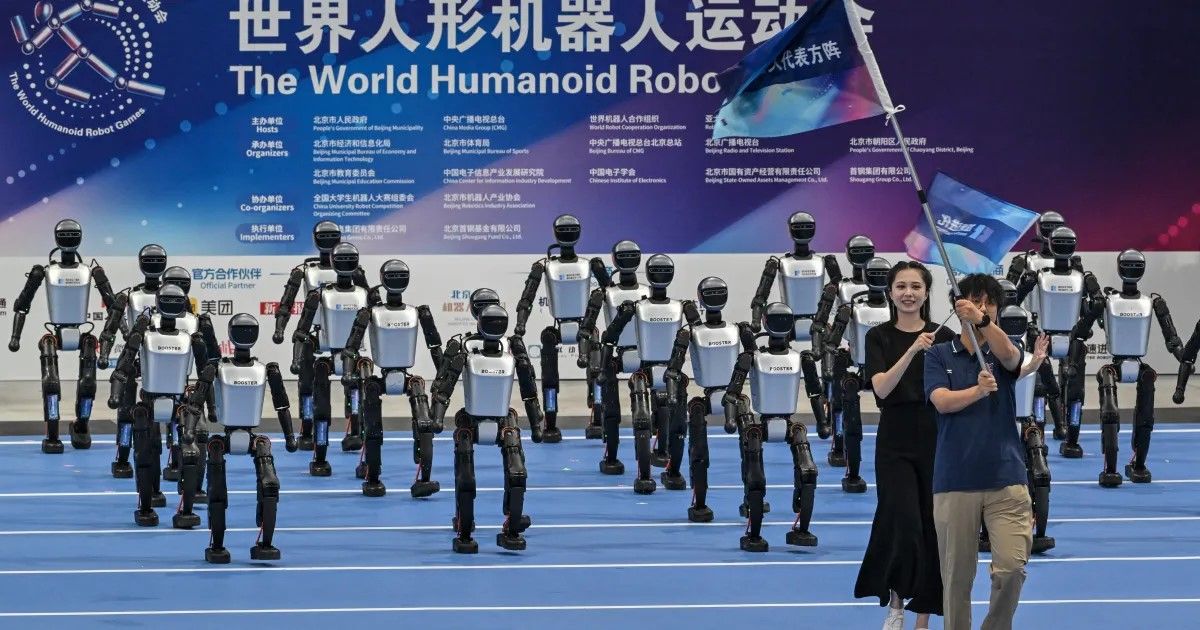Introduction
China has achieved a remarkable milestone in industrial robotics, cementing its position as the global leader in automated manufacturing. With over 2 million robots operating in Chinese factories and 300,000 new installations in 2023 alone, the Asian nation is redefining global production standards.
The Numbers Behind Chinese Dominance
According to the International Federation of Robotics report, Chinese factories installed nearly 300,000 new robots in 2023, exceeding the combined total of all other countries worldwide. This figure becomes even more striking when compared to the United States' 34,000 installations, placing America in a distant third position globally.
Robot density in Chinese factories has shown consistent growth since 2017, with over 150,000 robots installed annually. This automation strategy has significantly contributed to China's achievement of global manufacturing supremacy.
Government Strategy and Technological Development
The Chinese government has implemented a coordinated strategy combining public capital and policy directives to promote national robotics industry development. This approach mirrors strategies used to grow the electric vehicle and artificial intelligence sectors.
"This is not a coincidence. It has taken many years of investment by Chinese companies."
Lian Jye Su, Chief Analyst at Omdia
Chinese companies are no longer just purchasing robots from abroad but have become leading global manufacturers, continuously improving their technological capabilities in the sector.
Impact on Global Manufacturing
Robotic automation has enabled China to dominate global manufacturing production. By early 2024, Chinese factories were producing nearly one-third of all manufactured goods worldwide, surpassing the combined production of the United States, Germany, Japan, South Korea, and Britain.
This industrial transformation has significant implications for the global workforce and international competitive dynamics. Industrial robots, ranging from machines that weld automotive components to automated systems for goods movement, are redefining traditional production processes.
Future Implications and Technology Integration
China's robotics campaign extends beyond mere installation numbers. The integration of robotics with artificial intelligence advances represents a strategic approach to maintaining manufacturing leadership. This technological convergence is creating more sophisticated and efficient production systems.
The disruption caused by robots and AI in manufacturing is reshaping job roles and factory efficiency globally. As technology enables factories to operate with fewer workers while altering existing roles, the manufacturing landscape continues to evolve rapidly.
Conclusion
China's leadership in industrial robotics represents an epochal shift in the global manufacturing landscape. The strategic integration of robotics and artificial intelligence, supported by targeted government investments, has positioned China as the primary player in the future of automated production. This transformation will continue to influence global competitive dynamics and redefine manufacturing industry standards.
FAQ
How many industrial robots currently operate in China?
Over 2 million industrial robots are currently operating in Chinese factories, according to International Federation of Robotics data.
How many robots did China install in 2023?
Chinese factories installed nearly 300,000 new robots in 2023, exceeding the combined total of the rest of the world.
Where do the United States rank in industrial robotics?
The United States ranks third globally with 34,000 robot installations in 2023, far behind China's numbers.
When did China begin its automation campaign?
China embarked on a broad automation campaign over the past decade, installing over 150,000 robots annually since 2017.
What is the impact of robotics on Chinese manufacturing output?
Robotic automation has contributed to Chinese manufacturing dominance, with factories producing nearly one-third of all global manufactured goods.
How has the Chinese government supported robotics development?
The government used public capital and policy directives to promote Chinese companies in robotics, following similar strategies for electric vehicles and AI.
What types of robots are used in Chinese factories?
Factory robots range from machines that weld car parts together to automated claws that lift boxes onto conveyor belts.
